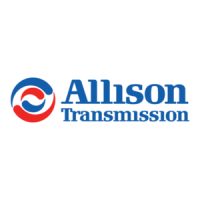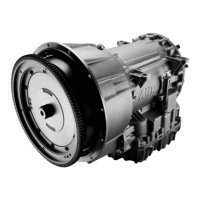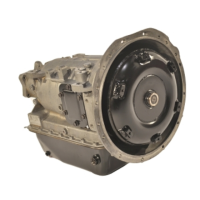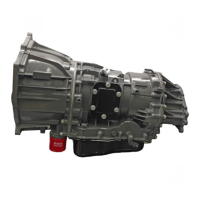5
Another feature of the 3000 MH and 4000 MH Series transmission is its ability to
adapt or “learn” as it operates. Each shift is measured electronically, stored and used
by the ECU to adapt or “learn” the optimum conditions for future shifts.
TORQUE CONVERTER
The torque converter consists of three elements — pump, turbine, and stator. The
pump is the input element and is driven directly by the engine. The turbine is the
output element and is hydraulically driven by the pump. The stator is the reaction
(torque multiplying) element. When the pump turns faster than the turbine, the
torque converter is multiplying torque. When the turbine approaches the speed of the
pump, the stator starts to rotate with the pump and turbine. When this occurs, torque
multiplication stops and the torque converter functions as a fluid coupling.
The lockup clutch is located inside the torque converter and consists of
three elements — piston, clutch plate/damper, and backplate. The piston and
backplate are driven by the engine. The clutch plate/damper, located between the
piston and the backplate, is splined to the converter turbine. The lockup clutch is
engaged and released in response to electronic signals from the ECU. Lockup clutch
engagement provides a direct drive from the engine to the transmission gearing. This
eliminates converter slippage and provides maximum fuel economy and vehicle
speed. The torsional damper absorbs engine torsional vibration to prevent
transmission through the powertrain.
The lockup clutch releases at lower speeds or when the ECU detects conditions
requiring it to be released.
NOTE:
If the shift quality of low mileage vehicles, or vehicles with
new or recalibrated ECUs is unacceptable, follow the procedure
explained in the ADAPTING SHIFTS section.
NOTE:
Allison WTEC III electronic control systems are designed and
manufactured to comply with all FCC and other guidelines regarding radio
frequency interference/electromagnetic interference (RFI/EMI) for
transportation electronics. Manufacturers, assemblers, and installers of
radio-telephone or other two-way communication radios have the sole
responsibility to correctly install and integrate those devices into Allison
3000 MH and 4000 MH Series transmission-equipped vehicles to
customer satisfaction.
The ECU is programmed to provide the most suitable operating
characteristics for a specific application. This handbook does not
attempt to describe all of the possible combinations. The information
contained herein describes only the operating characteristics most
frequently requested by the vehicle manufacturer.

